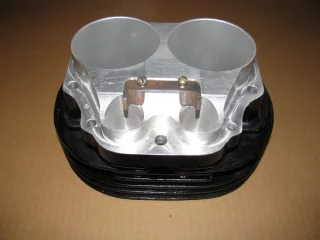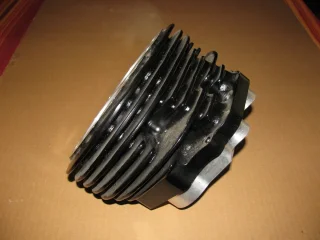Interesting stories about how people get into the alloy cylinder (for Commandos) business. Back when I was importing the ones Drew Robertson made in England, the problem with them I noticed was the poor quality of the machining and of the liners. The actual castings looked quite good. I ended up doing some re-machining to make them right before I sold them, but that pretty much made selling them a break-even proposition, at best, so when Steve Maney started making quality cylinders, I quit importing from Drew. The interesting part is why Steve started making his own. He'd seen the ones from Drew, and was also not happy with the machining, so he tried to buy just the castings, so he could machine them himself, but Drew wouldn't sell them that way, so Steve started making his own. That's turned into a very successful venture on his part. Later, when Kenny Dreer had some difficulties in buying cylinders from Steve for his 880 motors (I don't recall what the problem was), he decided to do his own cylinders, and had patterns made for them. When he quit making them, and sold off existing stock, I bought some of them. He also offered the patterns, but I didn't want to go into that business again. I don't know if he ever sold the patterns, of if they are sitting gathering dust somewhere. They would seem like a good place to start for anyone wanting to get into the market. I think Kenny had the cylinders machined by his favorite CNC machinist, whose name I've forgotten, so CAD drawings and programs might still be available, or maybe one could just contract with the same machinist to finish them.
Both Drew Robertson and Steve Maney stuck with a Dunstall design copy to comply with vintage/classic racing rules about period pieces and replicas. If not for that, they would probably look more like the Commando cylinders, with more, thinner fins. The Robertson cylinders started out with through bolts on the sides only, but the later ones also use two through bolts at back, using two of the existing stud locations.
Ken



